Raevenlord
News Editor
- Joined
- Aug 12, 2016
- Messages
- 3,755 (1.24/day)
- Location
- Portugal
| System Name | The Ryzening |
|---|---|
| Processor | AMD Ryzen 9 5900X |
| Motherboard | MSI X570 MAG TOMAHAWK |
| Cooling | Lian Li Galahad 360mm AIO |
| Memory | 32 GB G.Skill Trident Z F4-3733 (4x 8 GB) |
| Video Card(s) | Gigabyte RTX 3070 Ti |
| Storage | Boot: Transcend MTE220S 2TB, Kintson A2000 1TB, Seagate Firewolf Pro 14 TB |
| Display(s) | Acer Nitro VG270UP (1440p 144 Hz IPS) |
| Case | Lian Li O11DX Dynamic White |
| Audio Device(s) | iFi Audio Zen DAC |
| Power Supply | Seasonic Focus+ 750 W |
| Mouse | Cooler Master Masterkeys Lite L |
| Keyboard | Cooler Master Masterkeys Lite L |
| Software | Windows 10 x64 |
Today on their Financial Analyst Day 2017, AMD has taken the lid off their "Naples" Zen implementation. The balanced Zen core in its unrestrained, server-grade level has become EPYC, with AMD CEO Lisa Su holding the silicon in her bare hands. The new EPYC platform with its I/O performance improvements allows more GPUs to be connected to a CPU than any other platform, with up to 128 PCIe lanes being expected on these server-grade chips.


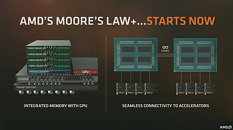

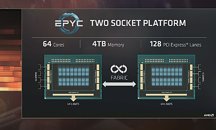
The Naples-based EPYC chips as announced by Lisa Su will carry up to 45% more cores, leveraging 122% greater memory bandwidth, and 60% more I/O bandwidth than their competitor's (read, Intel's) solutions. Expect more information to be available shortly.


AMD is also looking at EPYC to usher in virtualization environments...
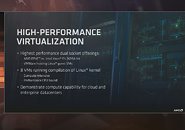
Thought it would seem that what the company is actually looking to do is out-muscle Intel in the server market by offering not only greater performance, lowered power consumption and greater flexibility...


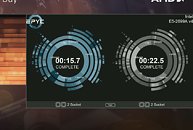

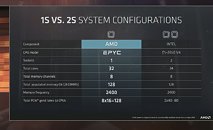

While tearing Intel a new one in the platform density equation, announcing a denser platform that simultaneously offers more cores and more I/O, while taking up less space and consuming less power, which should also improve thermal characteristics and overall operating costs, which are frequently much higher throughout the lifespan of the hardware than the initial investment.
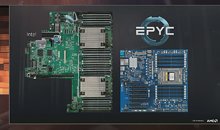

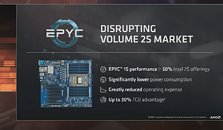
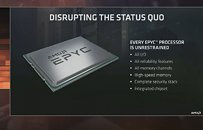
AMD also promises a much simplified machine intelligence architecture compared to Intel's by fully integrating platform requirements in their EPYC processors.But this is not all: AMD is committing to a road-map of excellence, with further upgrades to its platform linearly lined-up so as to allow businesses to perform long-term planning and investment.
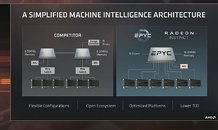

View at TechPowerUp Main Site





The Naples-based EPYC chips as announced by Lisa Su will carry up to 45% more cores, leveraging 122% greater memory bandwidth, and 60% more I/O bandwidth than their competitor's (read, Intel's) solutions. Expect more information to be available shortly.


AMD is also looking at EPYC to usher in virtualization environments...

Thought it would seem that what the company is actually looking to do is out-muscle Intel in the server market by offering not only greater performance, lowered power consumption and greater flexibility...






While tearing Intel a new one in the platform density equation, announcing a denser platform that simultaneously offers more cores and more I/O, while taking up less space and consuming less power, which should also improve thermal characteristics and overall operating costs, which are frequently much higher throughout the lifespan of the hardware than the initial investment.




AMD also promises a much simplified machine intelligence architecture compared to Intel's by fully integrating platform requirements in their EPYC processors.But this is not all: AMD is committing to a road-map of excellence, with further upgrades to its platform linearly lined-up so as to allow businesses to perform long-term planning and investment.


View at TechPowerUp Main Site
Last edited:







 ). Also, the hardware knowledge is more practical (how to build PCs, how to OC) than theoretical (how a CPU works).
). Also, the hardware knowledge is more practical (how to build PCs, how to OC) than theoretical (how a CPU works).